Well, we've found the ringleaders in this little impromptu telecommunications insurrection and took them out back, where we switched from our standard 'beat with a metaphorical hammer' to 'beat with an real hammer'. Which worked so well, actually, that our phones are now back up and behaving themselves. We can now take calls without any […]
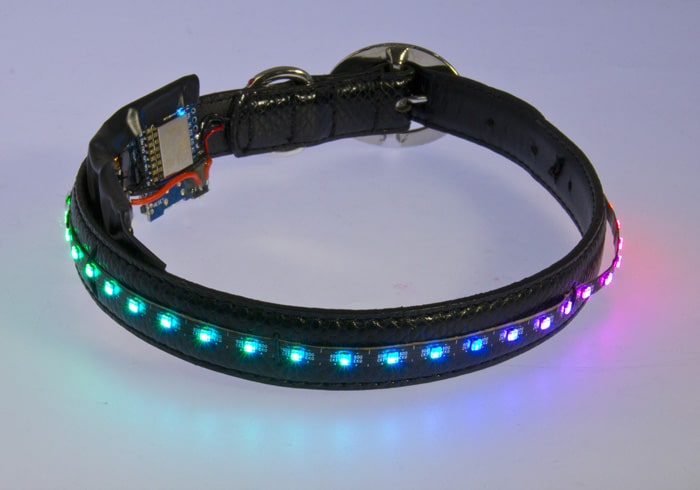
APA102-2020 MicroNova Custom LED Choker
I created this choker as a project to demonstrate the new MicroNova APA102-2020 LED strips.

Photo by Yeti, edited by Batgirl
These addressable LEDs are extremely small, less than 1/4 the size of a standard 5050 LED.
This project was built using engineering sample standard MicroNova 99 LED / meter strips . The MicroNova strips we are selling have 198/meter - twice the density!
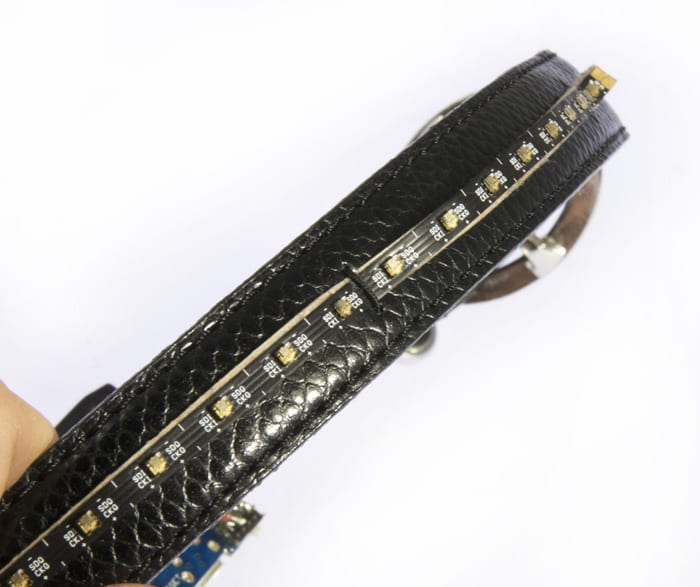
Reason for a Choker necklace:
Hats have been done, shoes have been done, pendants have been done. This is something new for a Valentine’s dance costume, so I decided to go with a choker design. I also wanted something that was interactive, something that would add another layer of WOW to just lighting.
The Build:
I used a Wemos D1 Mini development board along with a boost-converting battery shield for the Wemos D1.

The battery shield was a particularly good choice here because the MicroNova LEDs should be supplied a solid 5VDC. This board boosts the battery voltage to 5V, and then the Wemos D1 Mini bucks it down to 3V3 for it's own operation.
A mini SPDT Slide switch toggles the power from the battery shield to the D1. This allows charging the battery using the battery shield USB connector while not powering the D1.
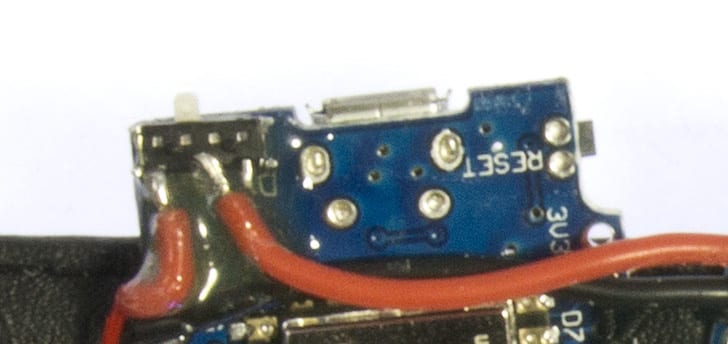
Epoxy locks the switch and wires in place.
The battery used is a conveniently handy older 450mAh Lithium Polymer. Depending on the lighting mode, this battery can power the necklace for a couple of hours.
I used elastic thread to attach the LED strip and components to the necklace. A heavy duty needle was all that was needed to punch through the (imitation) leather belt. Because the thread was elastic and tied under tension, it held the MicroNova strip well in place.
Operation:

When the choker powers up, it creates a WiFi Access Point called "HeartBurnChoker1".
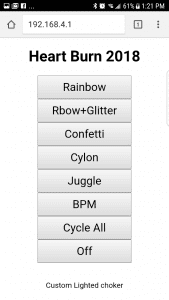
Once I connected to this WiFi, I opened a browser and went to 192.168.4.1. The control interface is simple, but effective. The D1 Mini has more than ample power and speed to effectively drive these LEDs. The MicroNova features separate clock & data lines, so even relatively slow I/O (like Raspberry Pi) can still make it work.
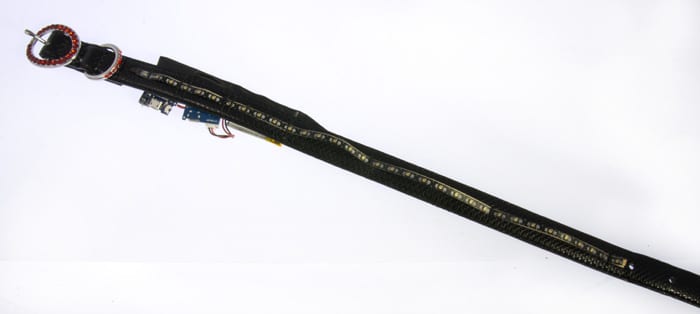
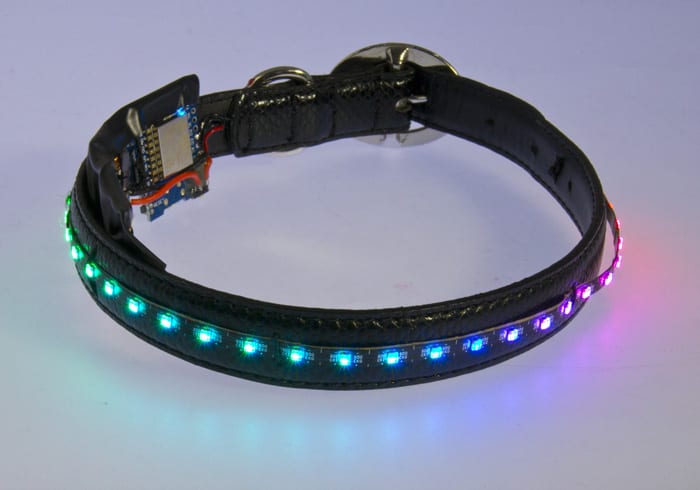
Video of the Collar in Action
MORE POSTS
View our newest kit we have online, the Hex Pummer, a very amusing night display that is charged by the sun. When the lights go out, it triggers the high intensity LEDs to start flashing on and off. They start out very STRONG and then fade away until the next LED "PUMMS" on. These amusing […]
We've got 20 spots, and 17 seats are filled. If you're planning on being at the Seattle Robothon and want to get in on an introductory Sumovore Workshop, now's the time to check out the registration page! Read More...
As Panasonic is no longer manufacturing their line of Sunceram solar cells, we've been on the hunt for suitable replacements. Here's our first find - the SCC3733! It's a polycrystaline cell in an epoxy casing, so it's a bit heavier, but much, much less prone to breaking or burning off of the solder-pads. It's also […]
Solarbotics, Ltd. is not responsible for misprints or errors on product prices or information. For more information, please see our Terms and Conditions.
Warning: This product contains chemicals known to the State of California to cause cancer and birth defects or other reproductive harm.
Please visit www.P65Warnings.ca.gov for more information. This item was manufactured prior to August 31, 2018.

